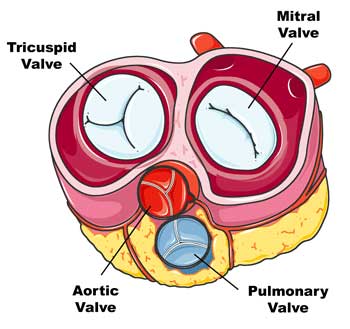What Are The Symptoms Of Tricuspid Valve Regurgitation
By Adam Pick on August 23, 2007
One of the most common questions I get via email is about heart valve disease symptoms. I just received an email that reads, “What are the tricuspid valve regurgitation symptoms?”
It’s a great question. Knowing what the documented, heart valve disease symptoms is critical as the patient or caregiver tries to diagnose themselves or their loved. But, you should be aware, some patients are completely asymptomatic – see more below. As discussed in the anatomy of your heart valves, the tricuspid valve is one of four valves in your heart. Along with the mitral valve, the pulmonary valve, and the aortic valve, the tricuspid valve acts to help manage the flow of blood in one direction through your heart. Similar to the pulmonary and aortic valve, the tricuspide valve has three leaflets.

That said, human heart valves can be impacted by several problems and valve defects which lead to heart valve disease. If stenosis or regurgitation occurs in the tricuspid heart valve, certain symptoms of valvular disease may manifest in the patient.
Some of the most common tricuspid valve regurgitation symptoms are:
- Shortness of breath, especially with exertion or when you lie down
- Fatigue, especially during times of increased activity
- Cough, especially at night or when lying down
- Heart palpitations — sensations of a rapid, fluttering heartbeat
- Swollen feet or ankles
- Heart murmur
- Excessive urination
- Chest pain (angina) or tightness
- Feeling faint or fainting with exertion
- Dizziness
However, it should be noted that not all patients are symptomatic. For example, out of all the symptoms referenced above, I only experienced one of the valve regurgitation symptoms listed which led to my valve replacement.
I hope this helps explain the symptoms of tricuspid valve regurgitation.
Keep on tickin!
Adam













